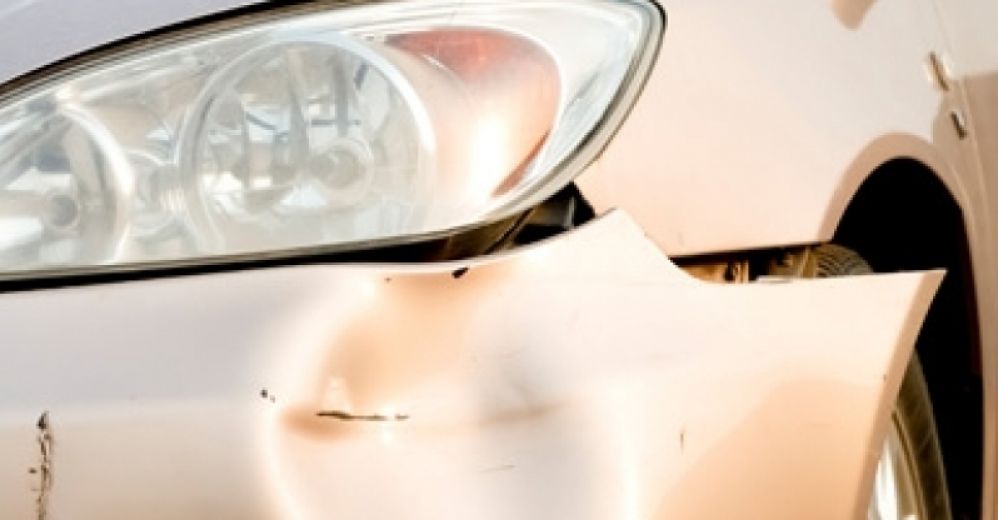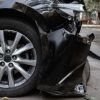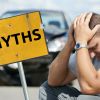A car that's been deemed a Cat D insurance write-off can be repaired and returned to the road. However, if you are thinking of buying one of these cars, it's important to do your research as these vehicles can present a number of challenges when it comes to insurance and valuations.
To complicate matters further, changes to insurance write off categories in 2017 replaced Cat D with Cat N. However, despite the changes, there are still many Category D vehicles on the road in the UK.
That's why we've put together this useful know how guide to help you understand what a Cat D vehicle is, how it differs from Cat N and what you should consider before buying one.
RAC Online Car Insurance
Save on your car insurance with our online self-serve policy. Rated ‘Excellent’ on Trustpilot.


What does Cat D mean?
A vehicle with a Cat D or Category D classification has been written off by its insurer because it is deemed to be too expensive to fix by the insurance company.
It's important to understand that car insurance companies look at the total cost of repair, including hire cars, expensive-to-source parts for particular models and so on.
A Cat D status can sometimes be for what appears to be very minor damage, but if the value of the claim is deemed to be more than 50% of the car's worth then the insurer will likely deem it to be a write-off.
Once the vehicle is written off and the insurance claim has been paid to the owner, the car insurance company then legally owns the vehicle.
Following this, insurers often sell these cars on to garages and motor factors that have the means to repair any damage at a reduced cost. This makes it financially viable for these businesses to repair the car to a roadworthy condition and sell it on, with the insurance company also recouping some of its costs.
READ MORE: What is a cat-C write-off?
Is Cat D the same as Cat N?
Cat D was replaced with Cat N in October 2017 and the two are broadly similar.
Like Cat N, a Cat D or Category D marker is assigned to a vehicle that has suffered light or cosmetic damage.
Cat N was introduced in 2017 to make it easier for car buyers to understand write off categories, with Category N indicating a vehicle has been written-off with non-structural damage.
Can you repair a Cat D insurance write-off and put it back on the road?
Yes, a car that has been deemed a Cat D insurance write-off can be returned to the road, but the Driver and Vehicle Standards Agency (DVSA) must be informed and the car should be repaired to the required standard and be road legal.
If the Cat D car is repaired, we do highly recommend that you get a professional mechanic or vehicle engineer to assess the quality of the work and ensure it has been carried out to a high standard.
This way, the repaired car will be as safe as possible.
Should I buy a Cat D car?
It’s important to remember a Cat D car will have been written off only because it is uneconomical to fix, not because any potential damage was so great it could not be driven again.
It’s also worth bearing in mind that while a Cat D car for sale might look like a great money-saving deal – even if it is in perfect shape with the repairs being carried out to a high standard – when it comes to reselling the vehicle, it won’t be worth as much.
If you are considering a Cat D car then it's important to do your research and ensure the vehicle is safe. This means the seller should have a history file for the vehicle, which documents the repairs and service history.
MOT tests should pick up any major safety defects. You can look up the vehicle's MOT test history online with the myRAC app. These checks will be vital to ensure your car is safe to drive and prevent any future breakdowns.
Traders have to declare if a car has been written off as part of a sale and the Cat D marker should also be shown on the V5C logbook.
If you have doubts about the safety of a Cat D car or the quality of its repair then the RAC offers vehicle inspections which can assist.
Are Cat D cars more expensive to insure?
A Cat D vehicle can cost a lot more to insure. Indeed, while a cat D write-off might seem cheap to buy, some insurers might refuse to offer you cover on a written off vehicle, too, no matter how light the damage was.
If you are thinking about buying a Cat D vehicle, be sure to check with your car insurance company whether they cover Category D cars.
Did you know we offer specialist learner driver insurance? And if you're looking to borrow a car for a short-period of time, you can take our temporary car insurance from 1 hour to 30 days. It only takes 15 minutes to activate.
How do I remove a Cat D classification from a vehicle?
A Cat D or Category D classification cannot be removed from a vehicle's history.
Once applied by the insurance company, the Cat D marker will permanently be on the car's history file.

RAC sale – up to 33% off*
• Roadside cover from £5.29 a month†
• We get to most breakdowns in 60 mins or less
• Our patrols fix 4/5 breakdowns on the spot

Category D car insurance write-off FAQ
- Is a cat D car worth buying?
Category D vehicles are a part of the least serious group of insurance write-offs, meaning that the repair costs are significantly less than the car’s value. So yes, they are worth buying.
- Is Cat D serious?
Category D car write-offs are the least damaged vehicles within this section. So, they can be repaired to make them road legal for less than you might think.
- Is Cat D more expensive to insure?
Unfortunately, you will need to pay a higher car insurance premium for any car that is recorded as a Category D write-off.
- Can you get a Cat D removed?
Once a vehicle is marked as Category D - it will remain there for its existence.












